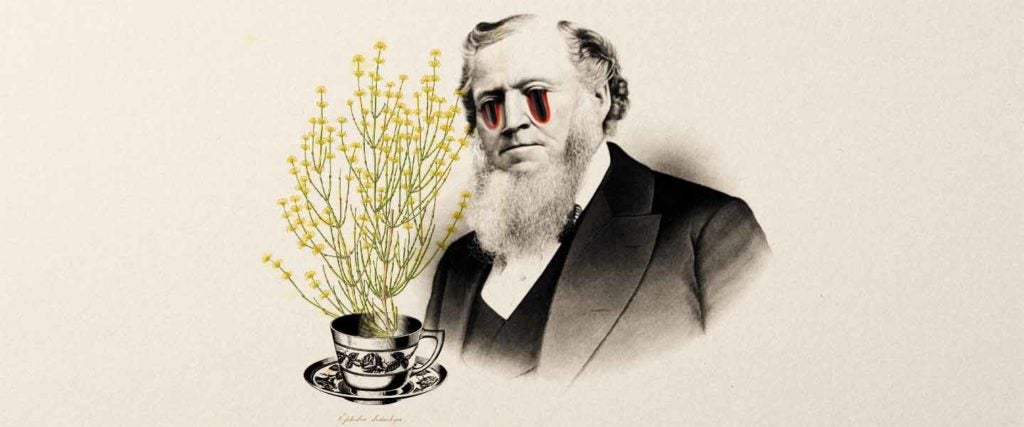Twenty years ago, a consumer advocacy group and a noted pharmacologist came together to kickstart what would become a national ban on a substance billed as nature’s amphetamine: ephedrine.
Sold for both its weight-loss and energizing effects, ephedrine became a ubiquitous supplement in the 1990s, enjoyed by big-rig truckers and wealthy housewives alike. But with rising use came a surge in reports of nasty side effects, the most concerning of which involved dangerous blood pressure spikes and cardiovascular damage. Ephedrine pills were especially deadly when mixed with caffeine or other stimulants; 81 people died after consuming the stuff between 1993 and 2001.
The petition, launched in 2001, led to the passage of a federal ban on ephedrine dietary supplements in 2004. Overall usage of ephedrine plummeted in the U.S. after that, with medical experts cheering the ban as a win for consumer safety. Of course, not everyone was happy: Those who loved the supplement bemoaned the loss of a powerful, efficient tool. Consider ephedrine the quaalude of the supplement world: once hugely popular, now recalled with nostalgia, even despite being a legitimately sketchy substance for casual use.
Last great PED was unchecked ephedra, man. I’m sure you were around when it ended up getting outlawed and later regulated but that shit was a miracle drug. That old Stacker 2 with un-policed ephedra was unbelievable
— Darth Parks (@dparks24) January 25, 2021
Since then, fans of the stimulant have been forced to turn to its origins, seeking out plant preparations that have ephedrine and its related compounds. The elegant solution is an infusion made with the stem-like leaves of two species, ephedra sinica, native to China and sold as the herb “Ma Huang”; and ephedra nevadensis, native to North America and referred to as “Mormon tea.”
While both plants have long traditions on each continent — ephedra has been a key compound in both traditional Chinese and Native American medicine — there’s not much mainstream appreciation of their uses. The key difference between the two is in potency: Ma Huang is chock-full of actual ephedrine, whereas Mormon tea primarily contains other related compounds, making for much mellower effects. Ma Huang is often sourced from vendors via sites like AliBaba or eBay, and it arrives looking like a bag of skinny, broken-up twigs. The appearance belies its intensity, as the ephedrine in those weird twigs works rapidly as a decongestant, energizes the mind and raises the body’s metabolism.
“It made me very focused and mildly stimulated, I would say it is better than coffee in that respect, but it also raised my blood pressure and that is why I would not indulge anymore,” as one cautious redditor observed.
“what are those sticks you’re drinking?”
“STRAIGHT EPHEDRA LETSGOOO ?”
— ☣️ (@prionflux) January 27, 2021
Again, Mormon tea is the calmer cousin of Ma Huang, with users reporting similar effects, especially its usefulness in opening up breathing passages when you have allergies or a cold. The bushy nevadensis variant grows in the dry deserts around the American West; Navajo tribes purportedly brewed the slender plant tips with water as an elixir to treat coughs. The first Mormon settlers to wander into Utah picked up on the plant’s uses, too, drinking it for a buzz in lieu of coffee and leaf tea. Various strains of native ephedra even became treatments for venereal diseases, which led people to refer to the brewed concoction as “whorehouse tea.”
Unlike Ma Huang, you can more easily find Mormon tea sold in dried plant form on Amazon and at herbal supplement shops. The flavor is less intense, too, and fans of Mormon tea swear by its nutty aroma, chill flavor and radiant golden hue. There isn’t an exact science to brewing either kind of ephedra tea, but the recommendation is to let it sit steep longer than conventional leaf tea — say, 10 to 25 minutes, depending on the thickness of the “leaves.” (Or just stick it in a kettle with water and bring it up to a boil.)
For anyone who lives where ephedra grows, the process for harvesting the stuff out in the wild is simple, as long as you can identify the correct varietal. Better yet, it’s super easy to just plant some in the ground. “It’s a great plant. It’s just so incredibly unusual looking,” horticulturist Marita Tewes Tyrolt told Deseret News. “It is as drought-tolerant as they come.”
Caffeine remains the king of stimulants in drink form, and given our broader love affair with coffee and conventional teas, it won’t be dethroned anytime soon. But even if it’s a far cry from the ephedrine pill boom of the 1990s, the cult of ephedra lives on, enthused by a more natural high.

